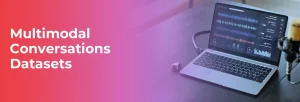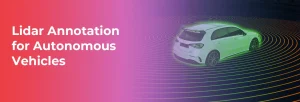Medical Data Annotation’s Impact on AI Success
Globally, the medical industry has become one of the premier investment destinations for enterprises, startups, and governments alike, committing over USD 600 billion to its growth and innovation. Recent innovations in the medical sector are performing miracles. Miracles like detecting the initial stages of breast cancer with accuracy that no skilled human radiologists can ever achieve. Beyond that, ML algorithms are predicting rare genetic disorders, and robot-assisted surgeries are enhancing precision in critical procedures and more.
These advancements are not just in research labs or theoretical journals, but are saving millions of lives, easing the suffering of people. More importantly, it’s reshaping the future of people by developing a foundational layer of treatment through personalised, preventative, and precision medicine that adapts to people, not diseases.
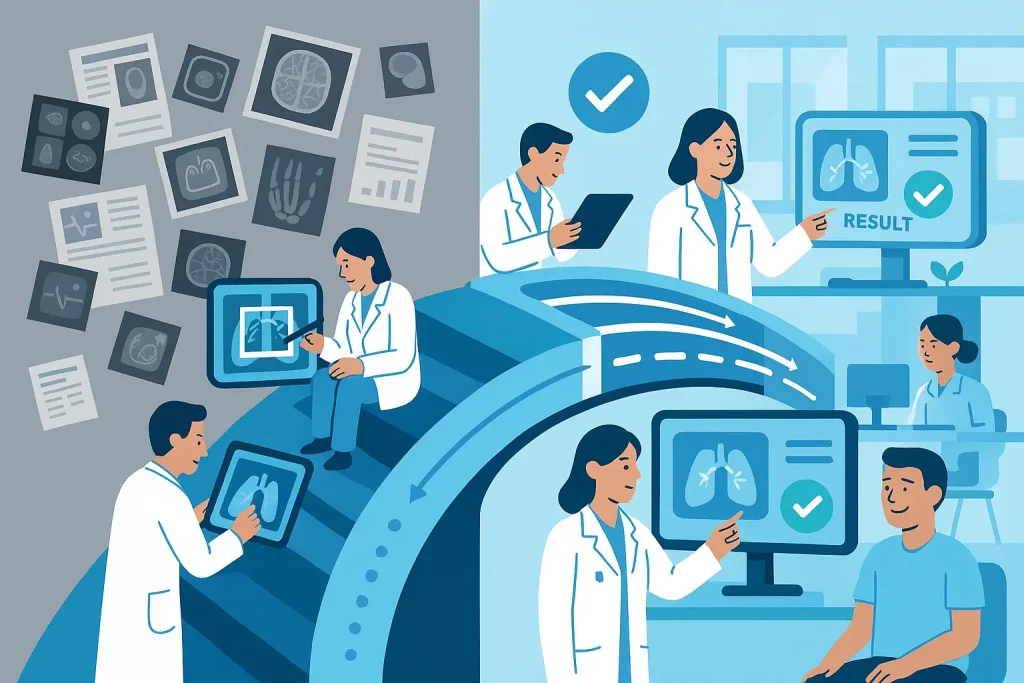
However, every miracle occurring worldwide is no magic, but rather years of research fueled by high-quality, meticulously annotated medical data.
When Stanford’s AI cardiology team achieved 99.7% accuracy in detecting arrhythmias—outperforming human cardiologists—the secret wasn’t just their algorithm. The foundation was meticulously annotated with ECG data that took 18 months to prepare. Meanwhile, competitors with poorly annotated datasets struggled to break 85% accuracy, ultimately scrapping million-dollar projects.
This difference illustrates a fundamental and foundational truth of the development of AI in medicine. Your model is only as good as your annotated data. For AI engineers and healthcare technology leaders, understanding medical data annotation services isn’t just about improving performance metrics; it’s about building systems that can impact patient outcomes while meeting regulatory standards.
Why Accuracy in Medical Data Annotation is Critical
There are several issues related to data, annotations, quality, and commercial and legal considerations that are overlooked by the implications of AI. However, in reality, professionalism, precision, and reliability are most essential in the medical field. Sometimes, even 99.999% accuracy isn’t enough because the remaining 0.001% can result in an undiagnosed patient and a lost life.
This last 0.001% accuracy exceeds what an algorithm alone can achieve. It relies on quiet, meticulous annotation work carried out by experts. Their annotation experience provides the machine with valuable understanding to learn from.
Each model, in turn, requires training data supported by deep clinical intuition—detecting subtle disease patterns, anatomical variations, and real-world diagnostic challenges.
Take diabetic retinopathy, for example. Diagnosing it from retinal scans isn’t as simple as drawing a box. A single mislabelled microaneurysm or overlooked blood vessel can cause an AI model to ignore early warning signs, resulting in late-stage diagnoses and preventable blindness for thousands.
The risks aren’t just theoretical. Medical AI systems operate under intense pressure and critical observation, where the stakes involve both human lives and financial safety. The AI system must deliver the following:
- Regulatory approval: Agencies such as the FDA demand proof of accuracy and reliability
- Clinical liability: One wrong prediction can open the door to malpractice litigation
- Professional trust: Doctors need to believe that AI truly offers sound medical recommendations
- Cost efficiency: A failed deployment can sink millions in R&D investments
Unlike standard vision tasks, medical data annotation requires a level of domain knowledge similar to clinical training. Radiologists, for example, spend years learning to differentiate normal anatomy from subtle pathology.
Annotators working with medical data need to have this same level of understanding because, without it, the AI simply won’t know what to look for.
What Is Medical Data Annotation?
Medical annotation service is the process of annotating health-related information to label and organise data to teach AI models. Therefore, the raw medical information, such as image, text, and sensor signals, is converted to structured datasets that a machine learning algorithm learns.
Unlike general-purpose data annotation, medical data annotation demands established expertise in anatomy, pathology, or clinical data. Not only do the annotators need to comprehend medical terminology and definitions, but they also need to recognise nuances in visual patterns that can differentiate normal and abnormal tissues.
These are some of the typical steps in the annotation process:
- Medical experts and annotators examine raw data for relevant features, structures, or conditions and apply standardised labelling protocols that permit consistent annotation of large datasets.
- Quality assurance teams ensure that annotated labels comply with set medical guidelines.
- Data scientists ensure that these annotations fit into machine-learning frameworks.
Types of Medical Data Annotation Services
The diversity of medical services reflects the data requirements. As the variety of data is being used to develop various innovations. Different data require different annotation techniques. Some of them are mentioned below:
Medical Image Annotation
Images become significantly more valuable when AI systems can accurately detect, classify, and understand their visual content. Medical image annotation represents the most complex and widely used form of healthcare data annotation. This category involves several specialised subtypes:
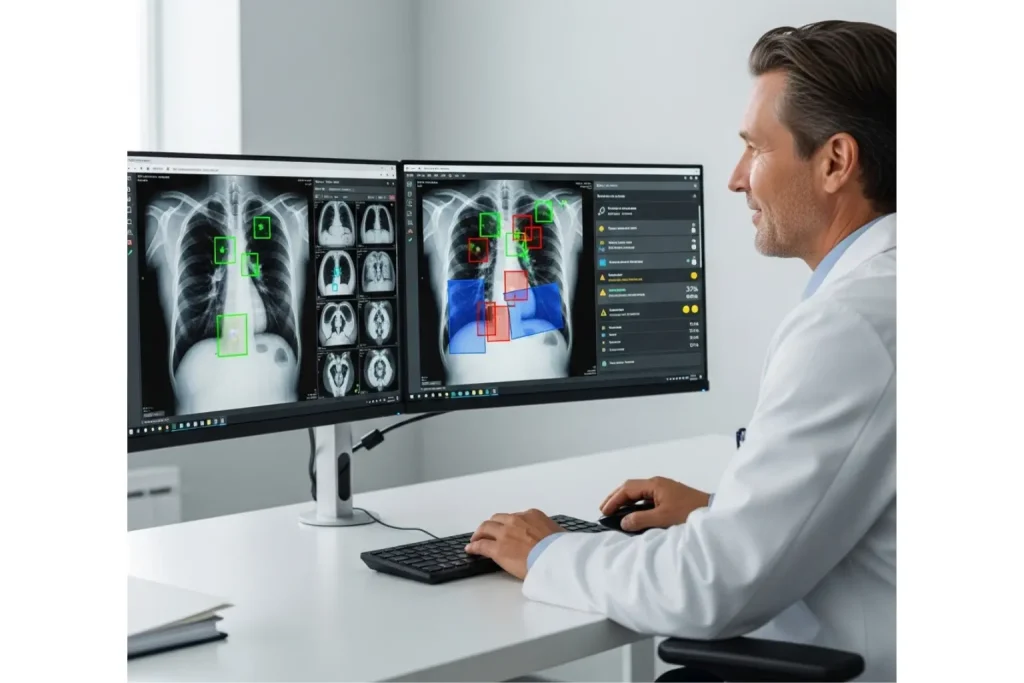
Radiology Image Annotation: This category consists of various reports, images such as X-rays, CT scans, MRIs, and ultrasounds. Professional annotators identify anatomical structures, mark pathological findings, and classify disease severity.
Pathology Annotation: It involves examining microscopic tissue samples to identify cellular abnormalities, tumour margins, and disease progression markers. This work requires deep expertise in pathology.
Dermatology Annotation: This annotation consists of various aspects of skin lesion analysis, mole mapping, and melanoma detection. Annotators must understand the ABCDE criteria (Asymmetry, Border, Colour, Diameter, Evolving) and various skin cancer classifications.
Clinical Data Annotation
This annotation falls under the category of text annotation. Text annotation empowers medical AI systems to interpret and process language with high linguistic precision.
Clinical data annotation encompasses the vast amount of textual information generated in healthcare settings. This includes electronic data, including health records, clinical notes, discharge summaries, and patient histories.
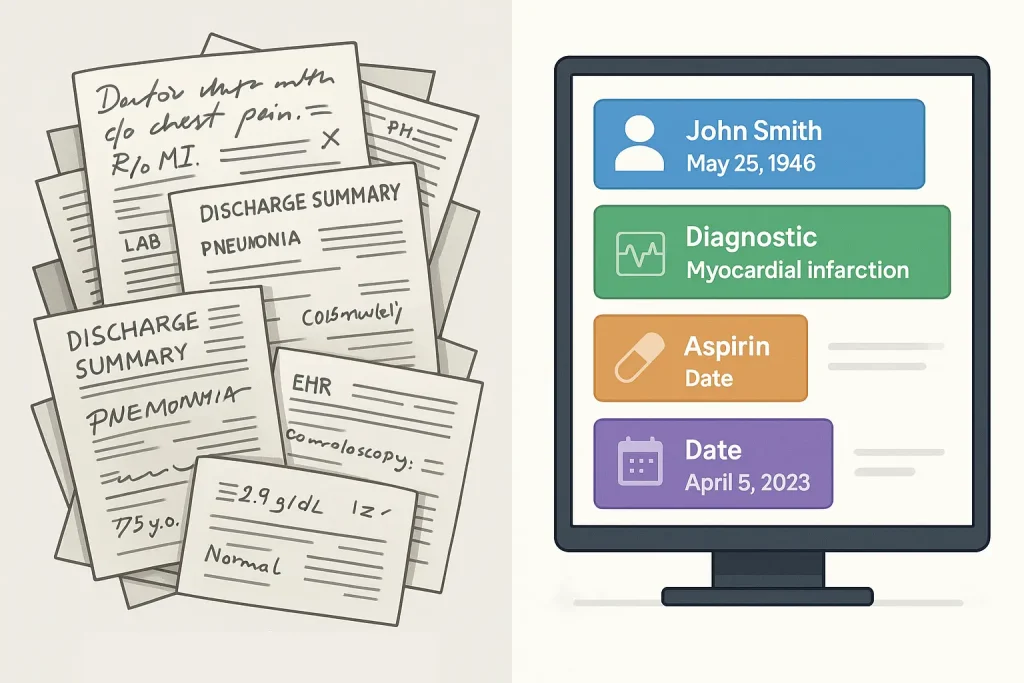
Medical Text Annotation: It involves extracting key entities such as information from unstructured clinical documents like progress notes, discharge summaries, lab reports, and electronic health records.
Named Entity Recognition: Annotation techniques like this include medications, symptoms, procedures, and anatomical references. Relationship extraction connects related concepts, such as linking symptoms to diagnoses or medications to side effects.
Clinical Outcome Annotation: It focuses on labelling patient outcomes, treatment responses, and prognostic indicators. This work supports predictive modelling and clinical decision support systems.
Specialised Annotation Services
Beyond traditional image and text annotation, medical AI projects often require specialised services:
Genomic Data Annotation: This involves labelling genetic sequences, identifying mutations, and annotating protein structures. It supports precision medicine initiatives and drug discovery programs.
Sensor data Annotation: Focusing on sensor data that is collected from fitness trackers, smartwatches, and medical monitoring devices. Annotators identify activity patterns, physiological events, and anomalous readings.
Audio data Annotation: It’s an emerging field that analyses patient-doctor conversation speech patterns, respiratory sounds, and cardiac rhythms. This emerging field shows promise for mental health assessment and remote patient monitoring.
Video Data Annotation: Analysing patient visual data, including facial expressions, body language, and other behavioural cues. As an emerging field, it offers significant potential for remote patient monitoring, early mental health assessment, and ongoing telemedicine diagnostics.
Case Study: Transforming Cardiac Care Through Precise ECG Annotation
One of the leading medical tech companies approached us. As a leading medical data annotation service provider, we aim to develop and deliver data for a cardiac care AI system. The client wants to achieve cardiologist-level accuracy in detecting 12 different cardiac arrhythmias. Developing this kind of solution was substantial and challenging—existing solutions achieved only 78% accuracy on complex arrhythmia patterns, which was unacceptable.
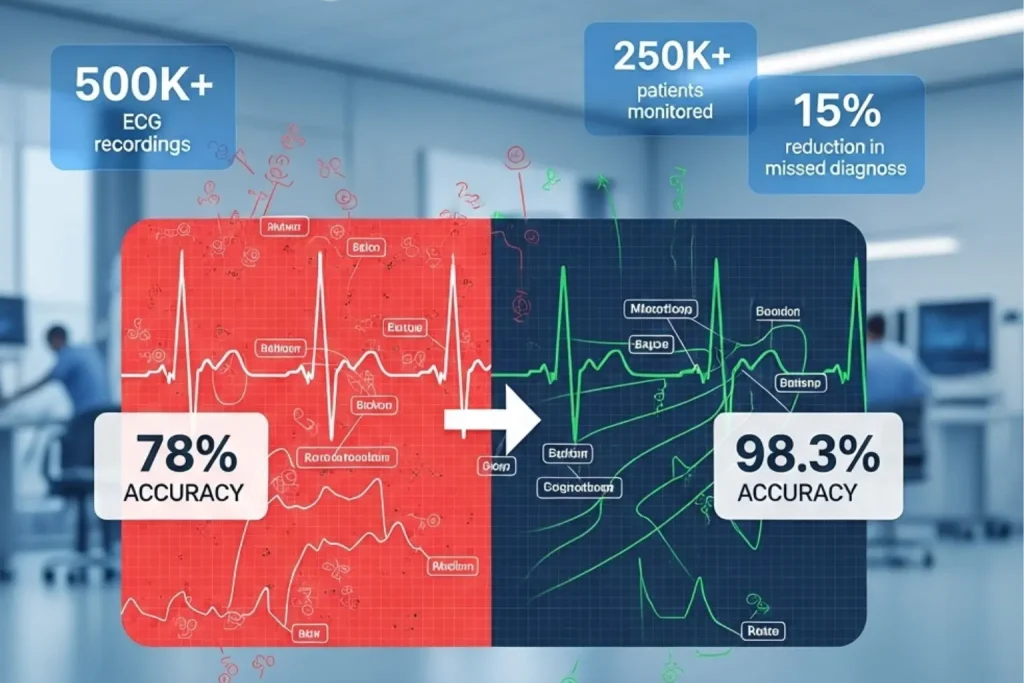
The Challenge
The client’s initial dataset contained 500,000 ECG recordings from diverse patient populations. However, the data was unstructured, and existing annotations were inconsistent and were not correctly labelled.
Our professional SME annotation teams use different classification criteria. Additionally, the rare arrhythmias were underrepresented. Identifying and addressing class imbalance issues that led to the model’s performance degradation.
Key obstacles our team faced included:
- Inconsistent annotation protocols across different medical centres
- Limited representation of pediatric and elderly patient populations
- Insufficient examples of life-threatening arrhythmias, such as ventricular tachycardia
- Varying ECG lead configurations and sampling rates
The Solution
We, Macgence AI, assembled a team of SMEs and professional annotators with years of experience to standardise the annotation process. Our team developed comprehensive annotation guidelines based on American Heart Association criteria and established quality control protocols.
The annotation process involved three phases.
- First, expert cardiologists reviewed and corrected existing annotations, ensuring consistency with established medical standards.
- Next, the team systematically annotated additional ECG recordings, with particular focus on rare arrhythmia patterns.
- Finally, Multiple annotators reviewed each complex case, with disagreements resolved through consensus discussion.
Results and Impact
The enhanced dataset by our expert annotators enabled the client to achieve a near 98.3% accuracy across all arrhythmia types. Approximately 20% improvement over their previous best model outcomes.
More importantly, the system demonstrated 98.7% sensitivity for life-threatening arrhythmias, meeting requirements for medical device approval.
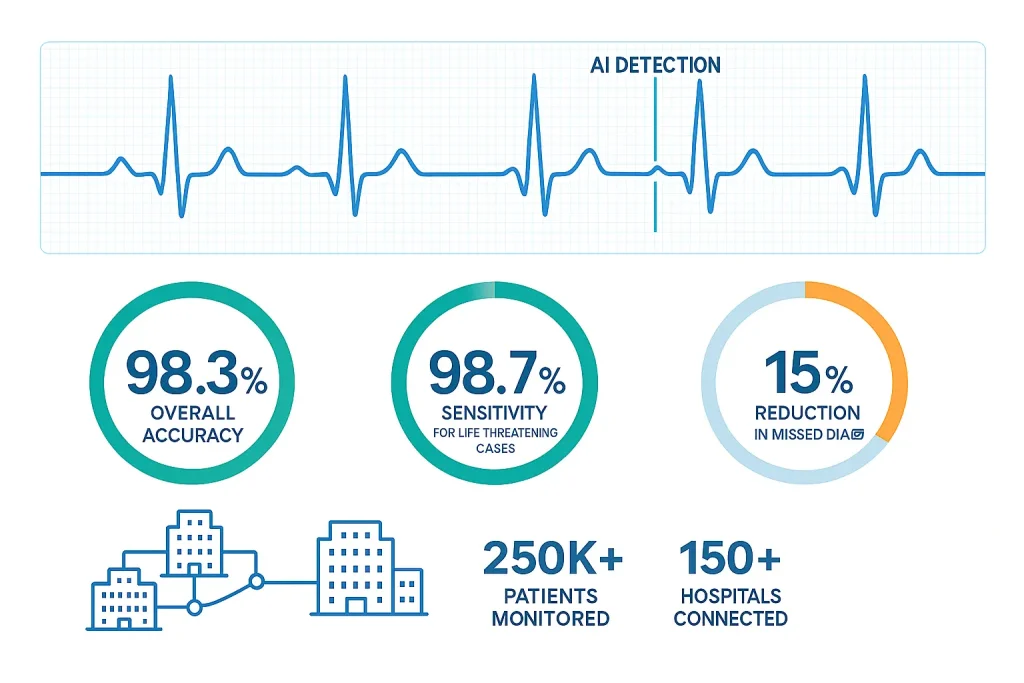
This project’s success led to a commercial deployment that now monitors over 250K+ patients across 150+ hospitals. Early results indicate approximately a 15% reduction in missed arrhythmia diagnoses and improved patient outcomes in cardiac care units.
Future Trends in Medical AI & Annotation
The medical AI landscape continues evolving rapidly, with several emerging trends reshaping how we approach healthcare data annotation. Understanding these developments helps enterprises & organisations prepare for future opportunities and challenges in the medical field:
Automated Annotation Technologies
Automated annotation is increasing in the market; thousands of images can be annotated in a day with acceptable precision. The medical field is accepting this computerised process, but the major flaw of this is the complexity of the medical field.
The complexities that can be understood and resolved only by the SME annotators. Pre-trained models can provide initial annotations that human experts then refine and validate.
This semi-automated approach resolves the weakness of both manual and automated annotations.
Multi-Modal Data Integration
Modern medical AI systems increasingly combine multiple data types such as images, text, genetic data, and sensor readings to provide more comprehensive assessments across all subfields.
This trend demands annotation services capable of managing complex, interconnected datasets while ensuring consistency across various modalities such as text, images, and more.
Personalised Medicine Applications
The shift toward personalised medication for a patient creates new annotation requirements. AI Systems are being designed to account for individual patient characteristics, such as previous treatment, medication, genetic profiles, and treatment histories, when making recommendations. This complexity demands more sophisticated annotation approaches that capture patient-specific nuances.
Global Collaboration Challenges
As medical AI becomes more international, annotation teams must navigate different medical standards all across the world. Privacy regulations and cultural considerations. HIPAA compliance in the United States, GDPR in Europe, and other regional requirements create complex operational challenges.
Conclusion
The success of your medical AI project fundamentally depends on the quality of your data. While sophisticated algorithms capture attention, patterns, and anomalies that can be missed by the meticulous work of medical data annotation services, they provide the foundation for accurate, reliable, and clinically meaningful AI systems.
As healthcare AI continues advancing, the demand for expert annotation services will only grow. Organisations that invest in high-quality medical data annotation today position themselves for success in tomorrow’s AI-driven healthcare landscape.
The choice isn’t whether to use professional medical data annotation services—it’s which partner can deliver the expertise, accuracy, and reliability your project demands. Your patients, your clinical partners, and your bottom line all depend on getting this decision right.
Ready to transform your medical AI project with expertly annotated data? Explore how Macgence AI can support your medical AI strategy with our specialised healthcare annotation services.
FAQs
Medical data annotation requires specialised domain expertise, knowledge of medical terminology, and understanding of clinical workflows. A small margin of error can cost a human life.
Quality assurance involves multiple validation layers: expert medical professionals review annotations, standardised protocols ensure consistency, and statistical quality metrics track annotation accuracy. Many providers use consensus annotation approaches where multiple experts review complex cases, with disagreements resolved through discussion or senior expert review.
Medical data annotation services cover various data types, including radiology images (X-rays, CT scans, MRIs), pathology slides, clinical text documents, ECG recordings, genomic sequences, and wearable device sensor data. Each type requires specialised annotation approaches and domain expertise.
Annotation timelines vary significantly based on data complexity, volume, and quality requirements.
Medical data annotation must comply with healthcare privacy regulations (HIPAA in the US, GDPR in Europe), FDA guidelines for medical device development, and clinical data management standards.
You Might Like
October 11, 2025
Why Your AI Can’t Understand Humans: The Multimodal Conversations Datasets Gap
Your conversational AI is failing, and you probably don’t know why. It responds to words perfectly. The grammar checks out. The speed is impressive. But somehow, it keeps missing what users actually mean. The frustrated customers. The sarcastic feedback. The urgent requests are buried in casual language. Here’s what’s really happening: your AI is reading […]
October 10, 2025
Why Your Self-Driving Car Needs Perfect Vision: The LiDAR Annotation Story
Imagine you’re driving down a busy street. Your eyes are constantly scanning – pedestrians crossing, cars merging, cyclists weaving through traffic. Now imagine teaching a machine to do the same thing, except it doesn’t have eyes. It has lasers. And those lasers need to understand what they’re “seeing.” We’ve seen many product launches that aim […]
October 9, 2025
What is Synthetic Datasets? Is it real data or fake?
Picture this: You’re building the next breakthrough AI product. Your models need millions of data points to learn. But there’s a problem. You can’t access enough real-world data due to various factors, such as compliance issues, security factors, and specific needs. Privacy regulations block you. Collection costs are sky-high. And even when you get data, […]


